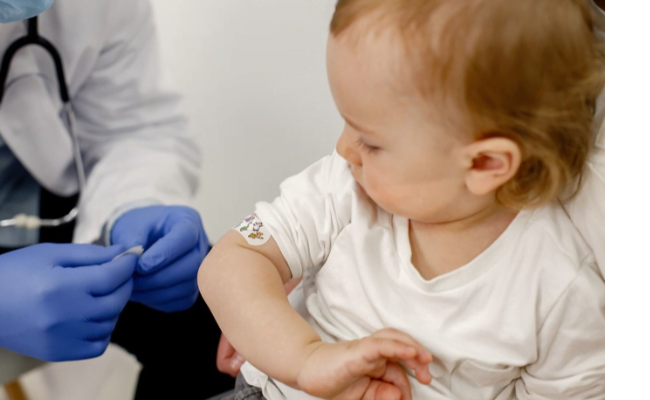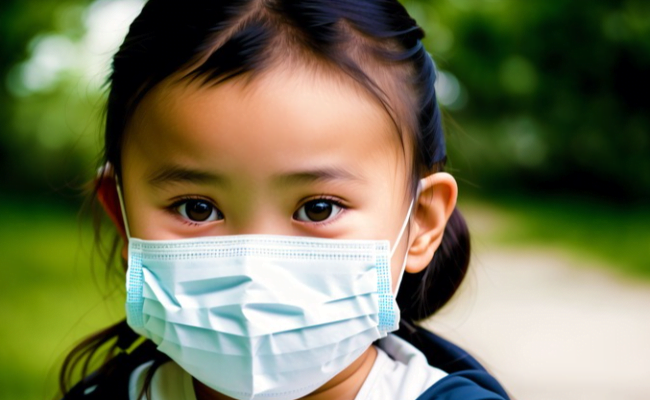As we navigate through our daily lives, we interact with a plethora of substances. For many, these interactions go unnoticed. But for others, specific substances known as allergens trigger an immune response leading to an allergic reaction. This can range from mild annoyance like a runny nose or skin rash to severe, potentially life-threatening conditions such as anaphylactic reactions. Allergies can significantly impact the quality of everyday life. Hence, understanding what triggers these reactions is crucial, and this is where allergy tests come into play.
Allergy tests, a collection of methods and procedures used by healthcare professionals to identify specific allergens, play a pivotal role in allergy management. This testing is fundamental in establishing a diagnosis of allergic diseases like allergic rhinitis, also known as hay fever, food allergies, drug allergies, and allergic contact dermatitis. The methods vary in approach and include skin tests, blood tests, challenge tests, and even an evaluation of the person’s medical history.
So, let’s dive deep into the world of allergy tests, learn more about the techniques involved, and understand how they contribute to allergy management.
Skin Tests
When it comes to diagnosing allergies, a skin test is often the first line of approach. They’re usually fast, reliable, and less invasive compared to other forms of allergy tests. The skin tests come in several varieties – the most commonly used ones include the skin prick test, the intradermal skin test, and the patch test.
The skin prick test, or scratch test, is one of the most common skin tests employed for diagnosing allergies. In this process, suspected allergens are applied to the skin’s surface, typically on the forearm or back. Then, a tiny prick or scratch is made to allow the allergen to penetrate beneath the skin. This test is commonly used to diagnose food allergies, pet dander allergies, and allergies to dust mites or insect stings.
If a person is allergic, a localized allergic reaction is observed, often as a small bump surrounded by a red halo. This positive reaction generally develops within 20 minutes, making the skin prick test a quick diagnostic tool.
The intradermal skin test involves the injection of a small amount of suspected allergens just beneath the skin surface. This test is more sensitive than the skin prick test and is often employed when the latter gives inconclusive results. Intradermal tests are usually used to diagnose drug allergies or insect sting allergies.
Patch tests are a type of skin allergy test that involves the application of suspected allergens to patches, which are then placed on the skin. This test is used to diagnose contact dermatitis, a skin condition that causes a rash when the skin comes into contact with certain substances.
Despite their effectiveness, it’s important to remember that skin tests should be performed under medical supervision as they can cause severe allergic reactions in some individuals.
Allergy Tests Beyond the Skin
While skin testing is typically the initial approach, they aren’t the only form of allergy testing. In some cases, skin conditions, certain medications like tricyclic antidepressants, or a severe reaction history might necessitate other forms of allergy tests. These include blood and challenge tests, and a thorough review of one’s medical history.
Blood tests, such as the specific IgE antibody test, involve drawing a blood sample to check for IgE antibodies specific to particular allergens. This test is often used when skin testing can’t be performed or are likely to give an inaccurate result.
Challenge tests, although less common, are often used to diagnose food allergies or asthma symptoms. This involves controlled exposure to a potential allergen under the watchful eye of a healthcare professional.
The review of one’s medical history is a fundamental part of allergy testing. It helps healthcare professionals identify potential allergy triggers. A detailed medical history would include information about one’s allergy symptoms, their severity, and frequency, potential exposure to common allergens, lifestyle habits, and even a family history of allergies.
Allergy Tests for Children
Allergies are common in children, and identifying these allergies early can help manage allergy symptoms and prevent severe allergic reactions. However, allergy testing for children requires a different approach and considerations compared to adults.
- Age considerations: Although there’s no specific age limit for allergy testing, the type of test and its interpretation can vary based on the child’s age. For instance, younger children might not produce as many antibodies as older children or adults. This could lead to a false-negative result in a blood or skin test.
- Skin tests for children: Skin testing, including skin prick tests, is generally safe for children. The test involves small pricks on the skin, which may cause minor discomfort, but are usually well-tolerated. The advantage of skin tests is the quick results, which can often be read within 15-20 minutes.
- Blood tests for children: These tests can also be performed in children, and are particularly useful when skin tests cannot be done, such as when a child has a skin condition. However, these tests are more invasive and can cause more discomfort due to the need for a blood sample.
- Interpreting results: Just like in adults, interpreting a child’s allergy test results involves considering the test results, the child’s medical history, and observed symptoms. A positive test doesn’t always mean your child will react to the allergen in everyday life.
- Managing your child’s fear: Children might feel scared about allergy tests, particularly blood tests. It’s important to reassure your child and explain the process in a child-friendly way. Let them know that these tests will help them feel better in the long run.
- After the test: Monitor your child for any signs of a delayed allergic reaction, especially after a skin test. While rare, these can occur a few hours after testing.
Allergy testing can help improve your child’s quality of life by identifying triggers that can be avoided or treated. If you suspect your child has allergies, speak with a healthcare provider to determine the best testing and treatment approach.
Preparing for an Allergy Test
When it comes to allergy testing, preparation is key to ensure accurate results. It’s essential to remember that several factors can influence the outcome, including the medications you’re currently taking and your physical state on the day of the test. Here are some tips to help you prepare:
- Medication review: Some over-the-counter antihistamines and prescription medications can interfere with both skin and blood tests, leading to inaccurate results. It’s important to let your healthcare professional know about any medicines you are taking, including vitamins and supplements. They might ask you to stop taking certain medications a few days before your test.
- Physical health: If you’re feeling unwell, have a fever, or have a severe skin rash, it may be best to reschedule your allergy test. Illness can interfere with the results, and severe skin conditions can make skin testing difficult or impossible.
- Understand the procedure: Before you go for the test, it’s crucial to understand what the procedure involves. Ask your healthcare provider about what to expect during and after the test. Knowing this information can help reduce any anxiety or fear you might have about the test.
- Bring your medical history: Your healthcare provider will want to know about your symptoms, when they occur, their severity, and any potential triggers. Make sure you provide a detailed medical history, including any family history of allergies.
- Avoid heavy exercise before the test: Strenuous exercise can trigger a severe allergic reaction in some people, potentially affecting test results. It’s recommended to avoid intense physical activity before your appointment.
- Wear appropriate clothing: For skin tests, wear loose, short-sleeved clothing as your arms will likely be the test site.
Remember, the goal of an allergy test is to identify your allergy triggers accurately. Proper preparation can significantly contribute to achieving this goal.
Allergy Testing Results and Interpretation
Interpreting allergy test results is a critical step in allergy management. If the test shows a positive reaction, it indicates an allergy to the specific allergen. However, a positive skin test does not always mean that the person will experience symptoms when exposed to the allergen in everyday life.
In the case of blood testing, a higher level of IgE antibodies might suggest an allergic reaction. However, it’s the combination of the test results and the person’s medical history that provides a more accurate diagnosis.
Allergy Management Post-Testing
Once the allergy tests have identified the specific allergens, the next step is managing the allergies. This might involve avoiding allergens, taking over-the-counter antihistamines, or undergoing specialized treatments such as allergy shots.
Allergy shots, also known as immunotherapy, involve the administration of gradually increasing doses of a specific allergen to help the immune system become less reactive. This is usually recommended for people with allergic rhinitis, certain food allergies, or severe allergic reactions.
It’s important to note that while allergy tests provide valuable insights, they’re not standalone solutions. Managing allergies involves consistent monitoring, occasional retesting, and working with healthcare professionals who have specialized training in diagnosing and treating allergies.
Conclusion
In conclusion, allergy testing is a valuable tool in the diagnosis and management of allergies. From skin to blood testing and a thorough examination of one’s medical history, these methods offer insights into how one’s immune system overreacts to specific allergens.
While the prospect of going through an allergy test may seem daunting, it’s a key step towards living a healthier, symptom-free life. So whether it’s skin testing or a review of your medical history, remember that each step brings you closer to understanding and managing your allergies effectively.
And remember, it’s essential to always consult with healthcare professionals before undergoing any form of testing or starting a treatment regimen. It’s your health, so ensure you’re in the best hands possible.
Partner with Powers Pediatrics for Your Child’s Allergy Care
At Powers Pediatrics, your child’s health is our top priority. As you’ve learned, understanding and identifying allergies are key steps in managing their symptoms and protecting your child from severe allergic reactions. That’s why our highly trained and empathetic team is dedicated to providing your child with accurate allergy testing, personalized treatment plans, and comprehensive support for living with allergies.
Don’t let allergies hinder the joy of your child’s growth and exploration. Schedule an appointment with us today and let us partner with you to ensure your child can experience the world without the worry of unexpected allergic reactions.



